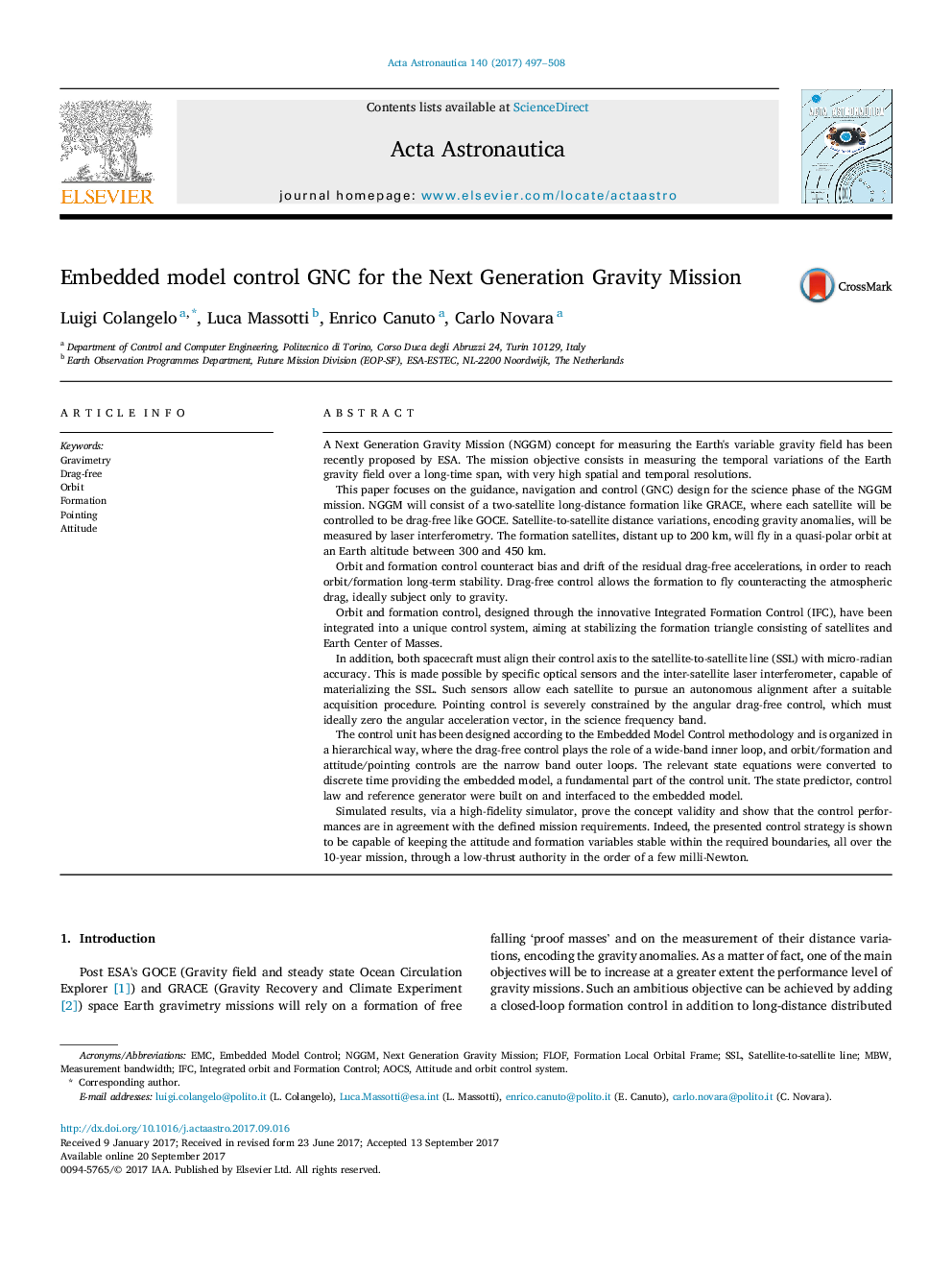| کد مقاله | کد نشریه | سال انتشار | مقاله انگلیسی | نسخه تمام متن |
|---|---|---|---|---|
| 5472139 | 1519914 | 2017 | 12 صفحه PDF | دانلود رایگان |

- AOCS for Next Generation Gravity Mission to measure the Earth's gravity field.
- Two-satellite long-distance LEO drag-free formation.
- Integrated orbit and formation modelling and control.
- Precise relative pointing control for inter-satellite laser interferometry.
- Embedded Model Control: hierarchy, frequency coordination, disturbance dynamics.
A Next Generation Gravity Mission (NGGM) concept for measuring the Earth's variable gravity field has been recently proposed by ESA. The mission objective consists in measuring the temporal variations of the Earth gravity field over a long-time span, with very high spatial and temporal resolutions.This paper focuses on the guidance, navigation and control (GNC) design for the science phase of the NGGM mission. NGGM will consist of a two-satellite long-distance formation like GRACE, where each satellite will be controlled to be drag-free like GOCE. Satellite-to-satellite distance variations, encoding gravity anomalies, will be measured by laser interferometry. The formation satellites, distant up to 200Â km, will fly in a quasi-polar orbit at an Earth altitude between 300 and 450Â km.Orbit and formation control counteract bias and drift of the residual drag-free accelerations, in order to reach orbit/formation long-term stability. Drag-free control allows the formation to fly counteracting the atmospheric drag, ideally subject only to gravity.Orbit and formation control, designed through the innovative Integrated Formation Control (IFC), have been integrated into a unique control system, aiming at stabilizing the formation triangle consisting of satellites and Earth Center of Masses.In addition, both spacecraft must align their control axis to the satellite-to-satellite line (SSL) with micro-radian accuracy. This is made possible by specific optical sensors and the inter-satellite laser interferometer, capable of materializing the SSL. Such sensors allow each satellite to pursue an autonomous alignment after a suitable acquisition procedure. Pointing control is severely constrained by the angular drag-free control, which must ideally zero the angular acceleration vector, in the science frequency band.The control unit has been designed according to the Embedded Model Control methodology and is organized in a hierarchical way, where the drag-free control plays the role of a wide-band inner loop, and orbit/formation and attitude/pointing controls are the narrow band outer loops. The relevant state equations were converted to discrete time providing the embedded model, a fundamental part of the control unit. The state predictor, control law and reference generator were built on and interfaced to the embedded model.Simulated results, via a high-fidelity simulator, prove the concept validity and show that the control performances are in agreement with the defined mission requirements. Indeed, the presented control strategy is shown to be capable of keeping the attitude and formation variables stable within the required boundaries, all over the 10-year mission, through a low-thrust authority in the order of a few milli-Newton.
Journal: Acta Astronautica - Volume 140, November 2017, Pages 497-508